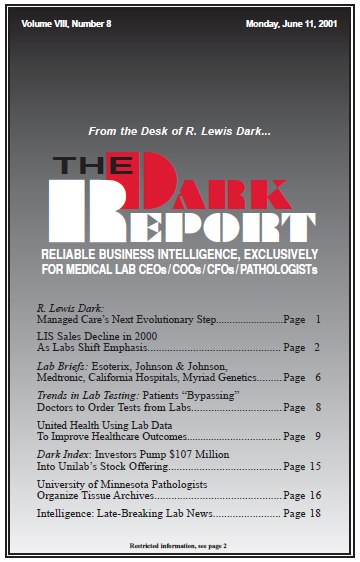CEO SUMMARY: Pathologists at the University of Minnesota Medical School are working to create an electronic data base that covers the more than 100 years of autopsy cases that have been archived and stored. Their goal is to use this information to improve teaching and to further research into the evolving nature of many diseases. …
University of Minnesota Pathologists Organize Tissue Archives Read More »
To access this post, you must purchase The Dark Report.


